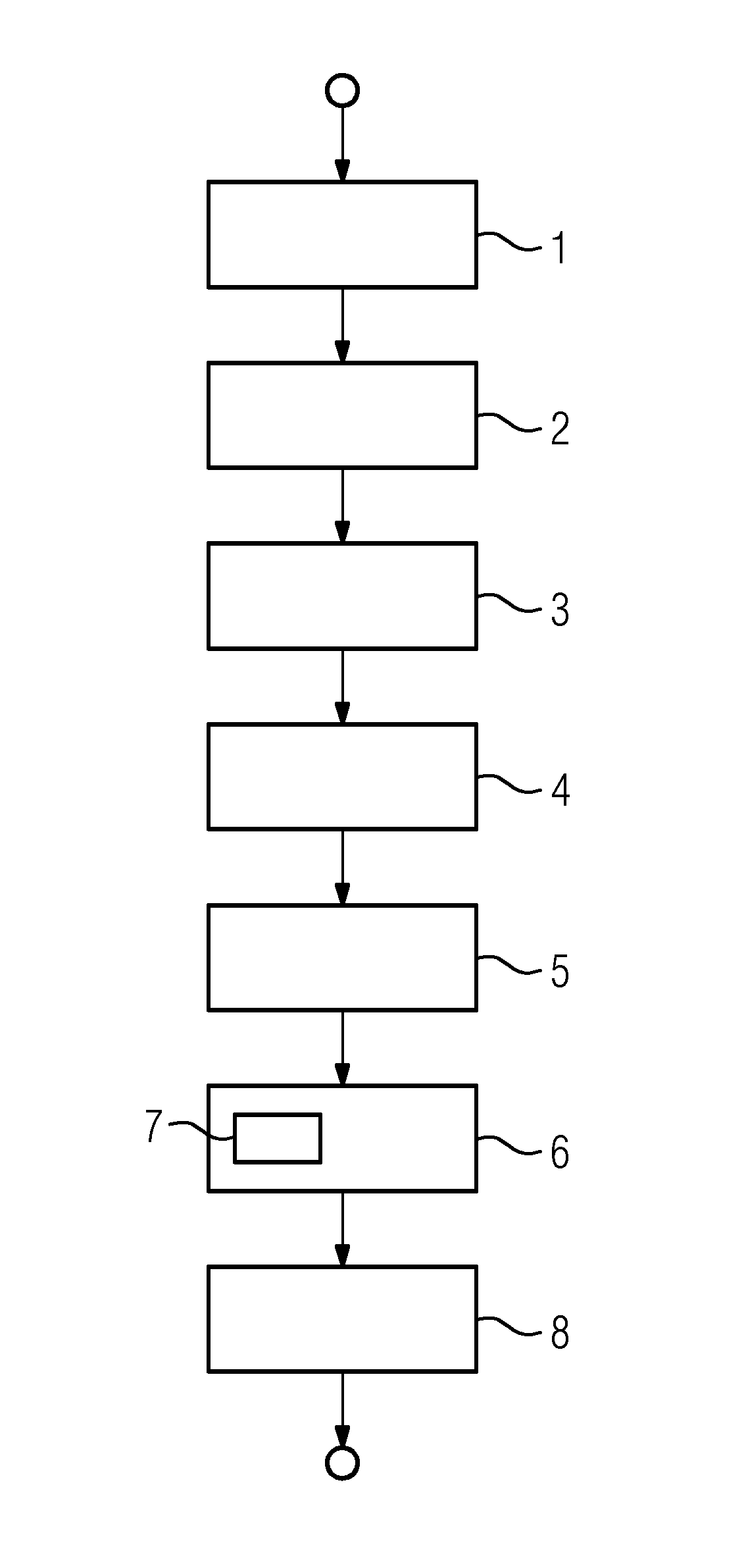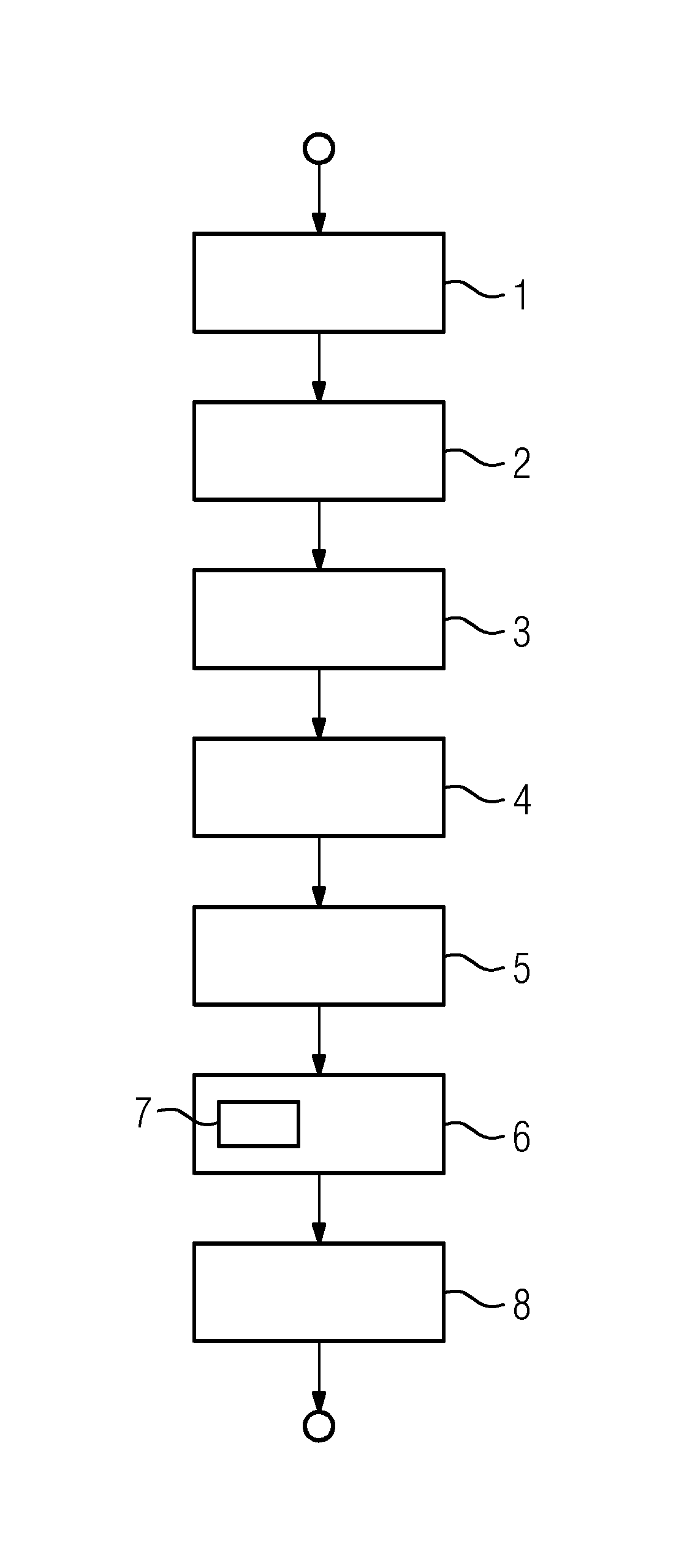Determination of a clinical characteristic using a combination of different recording modalities
a clinical characteristic and recording modality technology, applied in the field of determining the clinical characteristic of a body vessel segment, can solve the problems of inaccurate geometric representation of the stenosis geometry, low spatial resolution, and estimation of blood flow using the vascular cross-section, so as to achieve the effect of less easily obtained or extracted or determinable, and less radiation dose, and simple determination of clinical characteristics
- Summary
- Abstract
- Description
- Claims
- Application Information
AI Technical Summary
Benefits of technology
Problems solved by technology
Method used
Image
Examples
Embodiment Construction
[0030]In the method represented in FIG. 1, a computing device identifies (e.g., is provided) a three-dimensional reconstruction of a body vessel (e.g., a coronary artery) in a first act. The body vessel includes, for example, a complete body vascular tree of the coronary artery and also has a body vessel segment (e.g., a vascular branch). In the example shown, the body vessel segment is a body vessel segment of the coronary artery with a stenosis. The three-dimensional reconstruction of the body vessel containing the body vessel segment is generated using, for example, a computed tomography system or computed tomography.
[0031]The computing device identifies (e.g., is provided) an angiography (e.g., a segmented angiography) of the body vessel segment (e.g., of the vascular branch of the coronary artery with the stenosis) in a next act 2. In the present case, a further act is to register 3 the angiography recording to the three-dimensional reconstruction. Thus, a corresponding picture...
PUM
 Login to View More
Login to View More Abstract
Description
Claims
Application Information
 Login to View More
Login to View More - R&D
- Intellectual Property
- Life Sciences
- Materials
- Tech Scout
- Unparalleled Data Quality
- Higher Quality Content
- 60% Fewer Hallucinations
Browse by: Latest US Patents, China's latest patents, Technical Efficacy Thesaurus, Application Domain, Technology Topic, Popular Technical Reports.
© 2025 PatSnap. All rights reserved.Legal|Privacy policy|Modern Slavery Act Transparency Statement|Sitemap|About US| Contact US: help@patsnap.com


